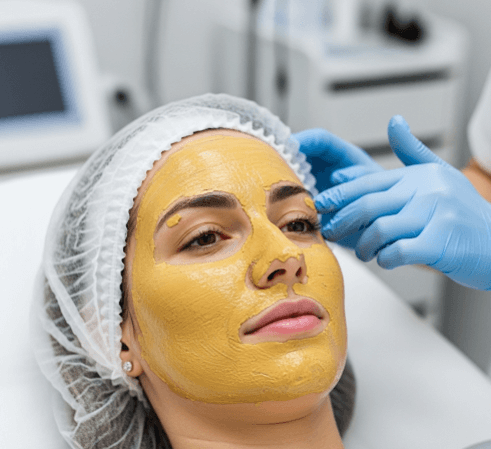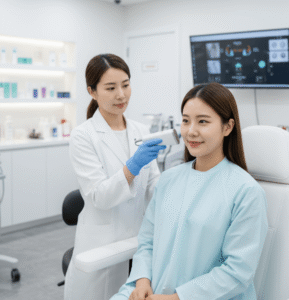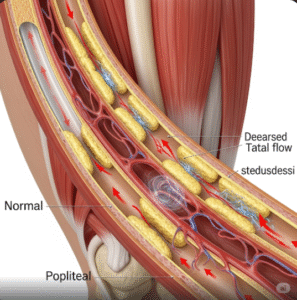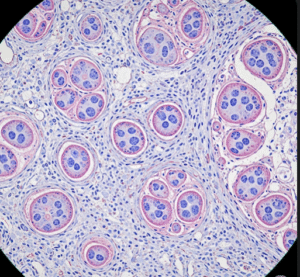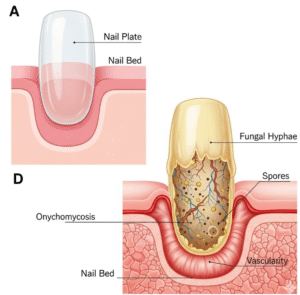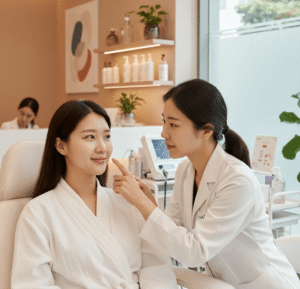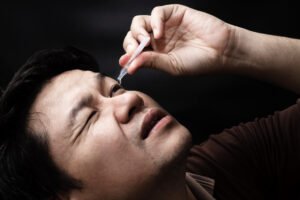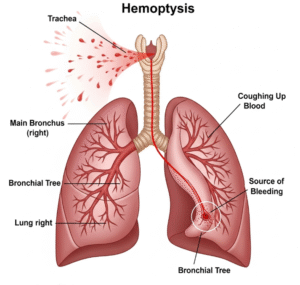What it is
→ The Cosmelan peel is a professional depigmentation treatment designed to correct hyperpigmentation, melasma, sunspots, post-inflammatory pigmentation, and uneven skin tone.
→ Unlike standard chemical peels that focus only on exfoliation, Cosmelan combines peeling action with melanin-inhibiting ingredients to both remove existing pigment and suppress new pigment formation.
→ The active formula contains ingredients such as azelaic acid, kojic acid, arbutin, phytic acid, and retinoids, which work together to exfoliate, lighten pigmentation, and regulate melanin production.
→ In Korea, Cosmelan is often chosen by patients with stubborn pigmentation unresponsive to regular peels or creams, making it a highly effective medical-grade solution.
Why it’s done
→ Cosmelan peel is performed to:
- Treat melasma (one of the hardest pigmentation conditions to manage).
- Lighten sunspots, freckles, and age spots.
- Reduce post-inflammatory hyperpigmentation (PIH) from acne or injury.
- Even out skin tone and restore brightness.
- Improve skin texture through exfoliation.
- Prevent recurrence of pigmentation by suppressing melanin production.
→ It is considered one of the gold-standard depigmentation treatments worldwide, especially for resistant pigmentation.
Alternatives
→ Alternatives to Cosmelan peel include:
- Standard chemical peels (glycolic, salicylic, TCA, lactic acid).
- Pigmentation cocktail peels (customized blends with brightening agents).
- Laser toning (Q-switched Nd:YAG) for melasma and dark spots.
- Topical creams (hydroquinone, tretinoin, vitamin C).
- Tranexamic acid therapy (oral or topical) for melasma.
- Microneedling with brightening serums.
→ However, Cosmelan is unique because it combines peeling + melanin regulation, offering longer-lasting and more comprehensive results.
Preparation
→ Before undergoing a Cosmelan peel, patients should:
- Avoid sun exposure and tanning for 2–4 weeks.
- Stop harsh skincare (retinoids, exfoliants, AHAs, BHAs) 5–7 days before.
- Moisturize regularly to prepare skin barrier.
- Use sunscreen daily leading up to treatment.
- Disclose medical history → especially for eczema, rosacea, or sensitive skin.
- Patch test may be done to check tolerance.
→ In Korean clinics, patients are often given pre-peel brightening creams to stabilize pigmentation before the procedure.
How it’s Done
→ The Cosmelan peel procedure involves two phases:
Phase 1: In-clinic treatment
- The dermatologist cleanses and preps the skin.
- The Cosmelan mask (rich in depigmenting agents) is applied evenly.
- The mask is left on the skin for 6–12 hours (duration depends on skin type and severity of pigmentation).
- Patients go home with the mask still on and remove it after the prescribed time.
Phase 2: Home maintenance
- Patients are given Cosmelan 2 cream and other aftercare products (soothing cream, sunscreen, hydrating serum).
- This phase is crucial for maintaining and enhancing results.
- Daily application continues for several months under dermatologist guidance.
→ Full treatment takes several months, but visible improvement is seen within 2–4 weeks.
Recovery
→ Recovery from Cosmelan peel includes an adjustment period:
- Days 1–3 → redness, tightness, and mild swelling.
- Days 3–7 → peeling and flaking begin.
- Week 2 → skin tone starts evening out, pigmentation fades gradually.
- 1–3 months → significant lightening of melasma and dark spots.
- 6 months+ → continued improvement with proper maintenance.
→ Aftercare instructions include:
- Apply soothing cream regularly to control irritation.
- Use sunscreen (SPF 50+) every day, even indoors.
- Avoid harsh products, saunas, and excessive sweating during peeling phase.
- Do not pick or peel flaking skin.
→ Most patients can resume daily activities within a few days, but redness and peeling may last for 1–2 weeks.
Complications
→ Cosmelan peel is generally safe but may cause:
- Redness and peeling (normal part of treatment).
- Itching, dryness, or burning sensation.
- Post-inflammatory hyperpigmentation (PIH) if sun protection is not used.
- Temporary breakouts or purging.
- Skin sensitivity to cosmetics or skincare products.
→ These risks are minimized with professional Korean protocols and strict aftercare.
Treatment options in Korea
→ Korea is highly advanced in pigmentation management, making Cosmelan treatments especially effective:
- Dermatology-led programs → Korean clinics perform Cosmelan only under medical supervision.
- Customized protocols → Cosmelan is often combined with laser toning, microneedling, or cocktail peels for enhanced results.
- Comprehensive aftercare kits → patients receive professional soothing creams, hydrating serums, and sunscreen as part of the protocol.
- Pigmentation expertise → Korean dermatologists specialize in melasma and pigmentation disorders common in Asian skin.
- Focus on prevention → strict sunscreen use and maintenance creams reduce recurrence.
- Medical tourism packages → international patients receive detailed aftercare instructions, English-speaking support, and long-term follow-up.
→ With medical-grade protocols, advanced aftercare, and pigmentation expertise, Korea is one of the best destinations worldwide for Cosmelan peel treatment.

